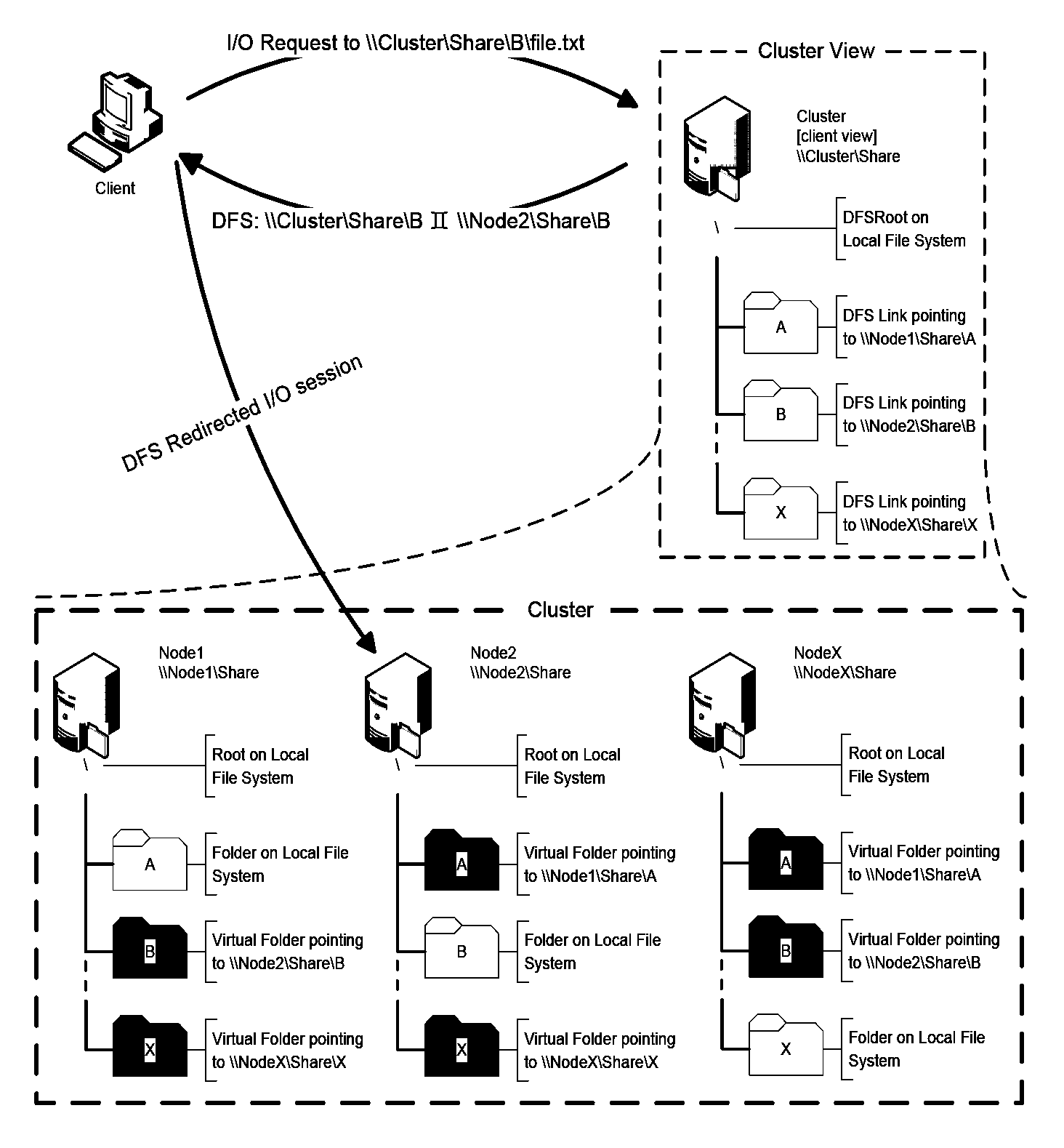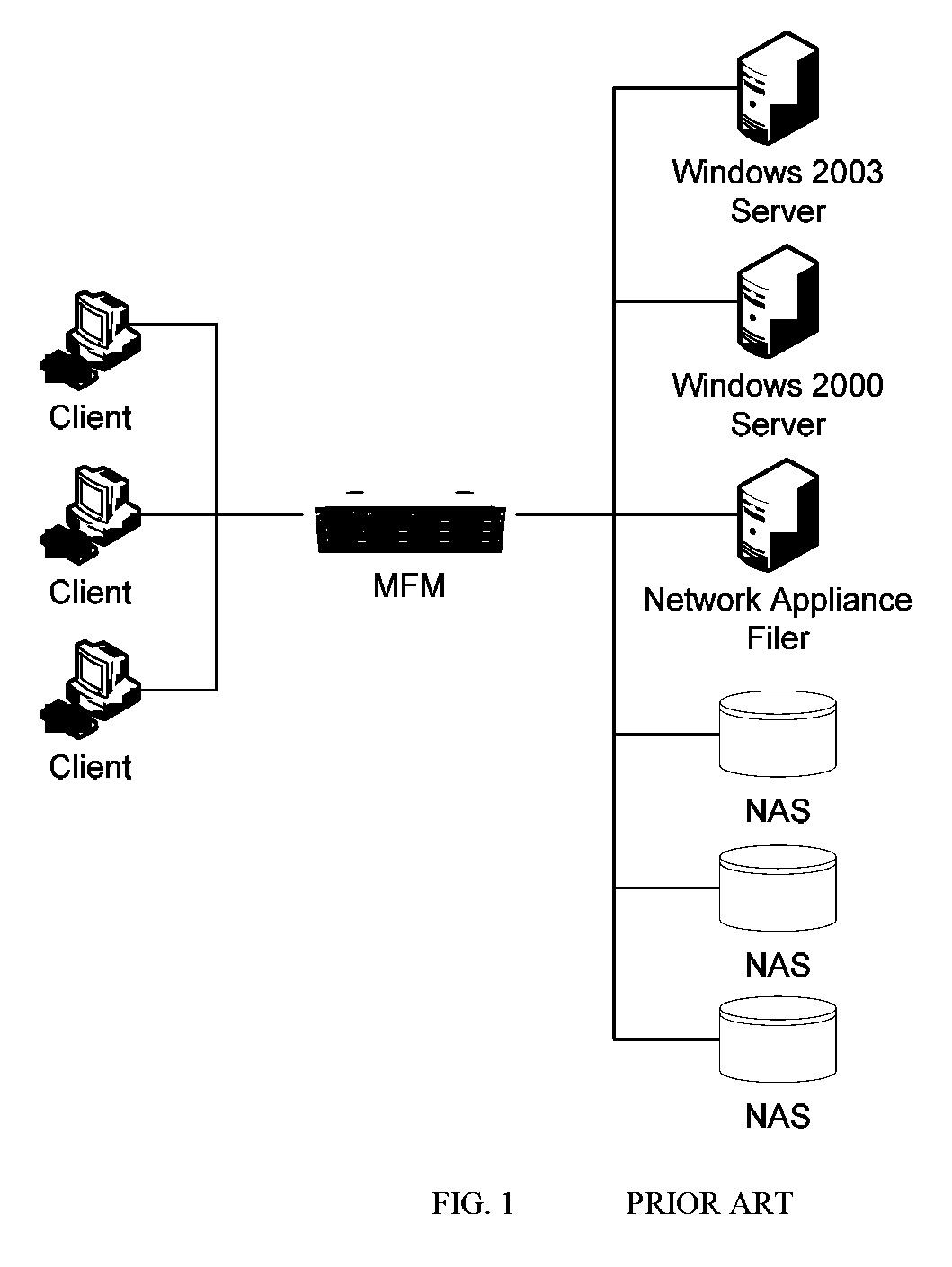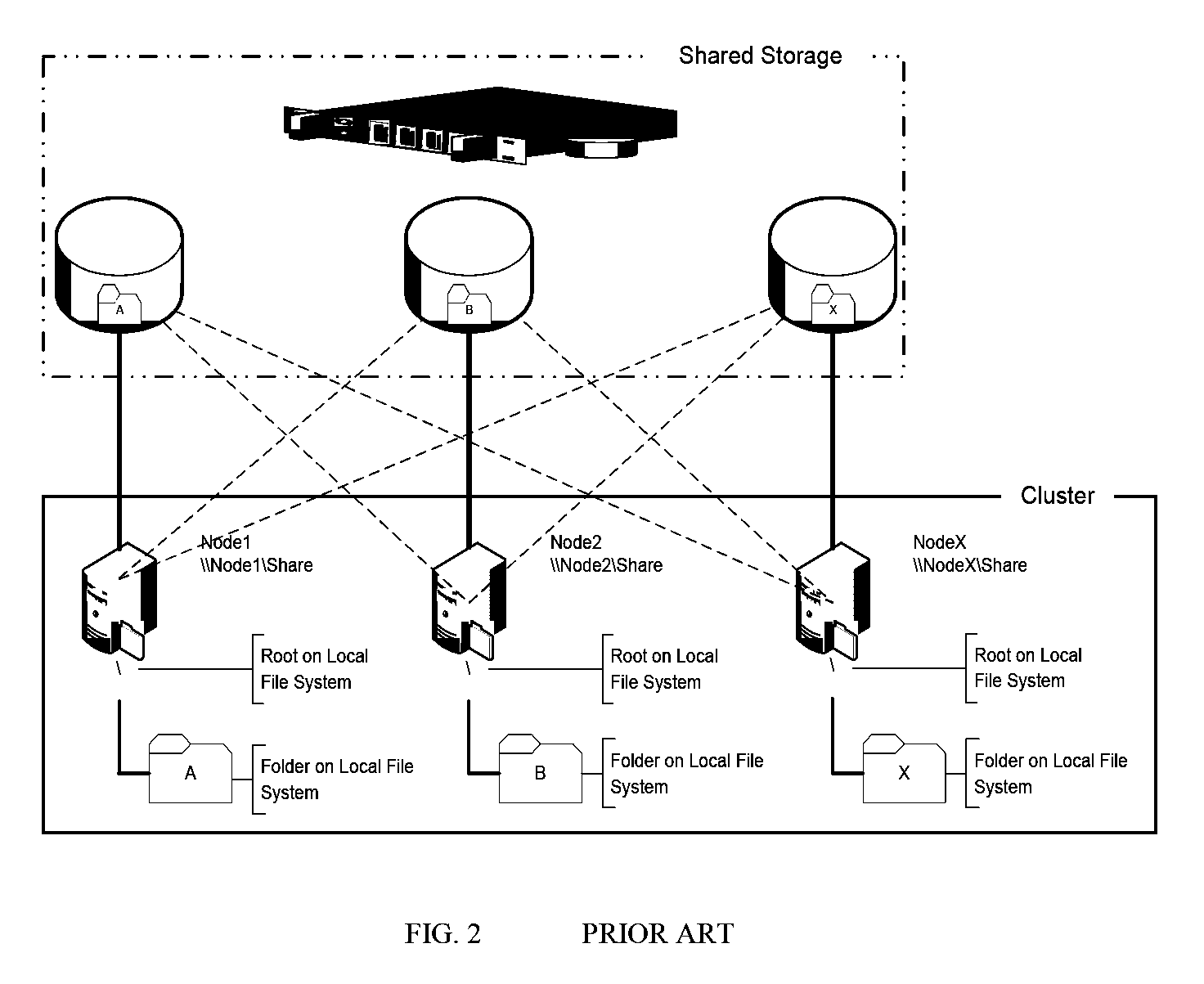Load sharing cluster file systems
a file system and cluster file technology, applied in the field of cluster file systems, can solve the problems of difficult algorithm writing, difficult to write algorithms, and take years to become fully reliable to function properly in a production environmen
- Summary
- Abstract
- Description
- Claims
- Application Information
AI Technical Summary
Benefits of technology
Problems solved by technology
Method used
Image
Examples
Embodiment Construction
[0069]Definitions. As used in this description and the accompanying claims, the following terms shall have the meanings indicated, unless the context otherwise requires.
[0070]A “cluster” is a group of networked computer servers that all work together to provide high performance services to their client computers.
[0071]A “node,”“computer node” or “cluster node” is a server computer system that is participating in providing cluster services within a cluster.
[0072]A “cluster file system” is a distributed file system that is not a single server with a set of clients, but instead a cluster of servers that all work together to provide high performance file services to their clients. To the clients, the cluster is transparent—it is just “the file system”, but the file system software deals with distributing requests to elements of the storage cluster.
[0073]An “active-active file system cluster” is a group of network connected computers in which each computer (node) participates in serving ...
PUM
 Login to View More
Login to View More Abstract
Description
Claims
Application Information
 Login to View More
Login to View More - R&D
- Intellectual Property
- Life Sciences
- Materials
- Tech Scout
- Unparalleled Data Quality
- Higher Quality Content
- 60% Fewer Hallucinations
Browse by: Latest US Patents, China's latest patents, Technical Efficacy Thesaurus, Application Domain, Technology Topic, Popular Technical Reports.
© 2025 PatSnap. All rights reserved.Legal|Privacy policy|Modern Slavery Act Transparency Statement|Sitemap|About US| Contact US: help@patsnap.com



